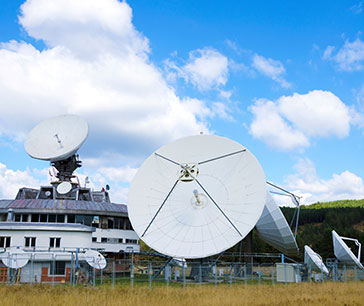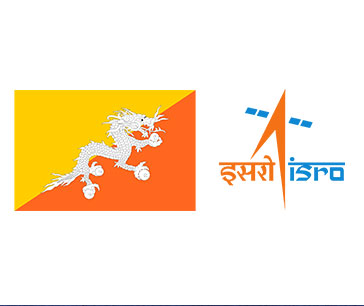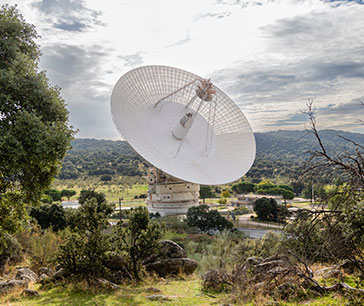Table Of Contents

Lalit Janardhan Katare

Rosy Behera
How Can Satellite Ground Stations Help Your Business Make Robust Communication?

Highlights:
- Why are satellite ground stations important for today’s world?
- A brief on the evolution of satellite ground station
- Future predictions of the domain
- Cutting-edge developments in the industry
Satellite ground stations (sometimes called earth stations) are ground-based radio communication systems that establish and maintain radio communications with satellites. These systems can receive and send signals from satellites to facilitate communication and data exchange. SGSs collects weather and other information for organizations such as National Weather Centers (NWCs) and Research Centers (RCs). In this article, we will discuss how satellite ground stations can help build strong communication to facilitate reliable and seamless transmission of signals to ensure uninterrupted connectivity for various applications such as internet access, television broadcasting, and internet access, providing broader scopes for challenging operations.
In 1976, Joseph Milano was the first to develop Teleport, a satellite ground station that acted as a connecting hub for various broadcasting services. In that period, The ITU radiocommunication sector set some standards that every ground station had to meet while communicating with the operator’s satellite. For instance, Intelsat published the Intelsat Earth Station Standards based on which ground stations were classified. These standards measure the capabilities of parabolic antennas of the ground stations.
Backbone for global connectivity and mission support
However, these days, a satellite ground station consists of a reception antenna (receiver), a feed horn, a waveguide, and a receiver. Most satellite ground stations are mounted on pedestals. The antenna is protected by a protective cover known as a radome. These stations receive, boost, and transmit these signals back to the satellite, which then forwards the data to the desired location. Furthermore, satellite ground stations have also contributed a major role in receiving telemetry data that can promote many space mission activities.

Additionally, satellite ground stations play a crucial role in sustaining numerous industries that rely extensively on satellite technology. Specifically, the broadcasting sector heavily relies on these stations to capture satellite signals containing television and radio content. These signals are distributed to cable providers, broadcasters, and eventually to households, allowing access to a diverse range of entertainment choices.
According to recent studies, the global satellite ground station industry is estimated to showcase a notable CAGR of 11.9% by 2032. India is anticipated to cite the fastest CAGR of 14.0% from 2023 to 2032. Furthermore, China is expected to gain a second position during the forecast period. Based on application, the commercial segment is expected to witness a revenue growth of $76.65 billion throughout the forecast timeframe. However, the government segment would garner $28.98 billion from 2023 to 2032.
Bhutan government and ISRO officials inaugurated the Indo-Bhutan satellite ground station in March 2023
The inauguration of the ground station for the India-Bhutan satellite, a collaborative project, took place in Thimphu, Bhutan's capital city. Ground stations, featuring crucial components like parabolic antennas, facilitate communication with satellites by receiving and transmitting radio waves.

The inauguration ceremony in Bhutan was presided over by Lyonpo Tandi Dorji, Bhutan's Foreign Minister, Dr Somanath, Chairman of ISRO and Secretary of the Department of Space, Sudhakar Delela, the Indian Ambassador to Bhutan, and Lyonpo Karma Wangdi, Minister of Industry, Commerce, and Employment, Bhutan. The delegation additionally addressed the expansion of collaboration between India and Bhutan in the space sector. They explored methods for strengthening technological connections in space technologies.
The 'INS-2B', also known as BhutanSat, represents ISRO's second nanosatellite project for Bhutan. This satellite consists of two primary payloads: APRS-Digipeater and NanoMx. NanoMx is a multispectral optical imaging payload developed by India's SAC (Space Applications Centre).
In short, the satellite ground station sector is gaining momentum due to a rapid expansion of the satellite industry, the surge in autonomous systems and IoT, an increase in the usage of satellites for air traffic control, and a surge in demand for defense and military satellite ground station solutions. However, 5G integration in satellite communication and technological advancements will further boost the market in the forthcoming years.

To gain the historical performance of the satellite ground station industry in terms of revenue growth, adoption, and overall penetration across key segments, contact our industry experts today! They can also support you in making investment decisions and attracting new investors.

